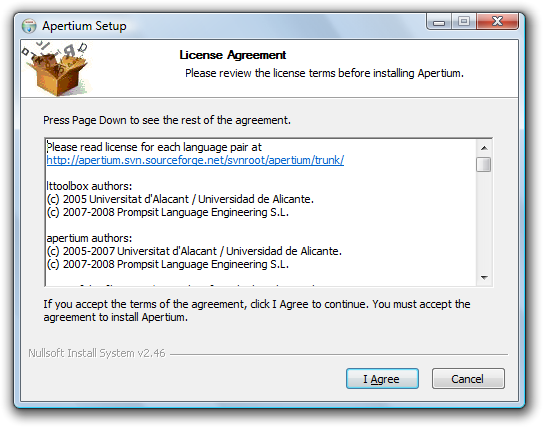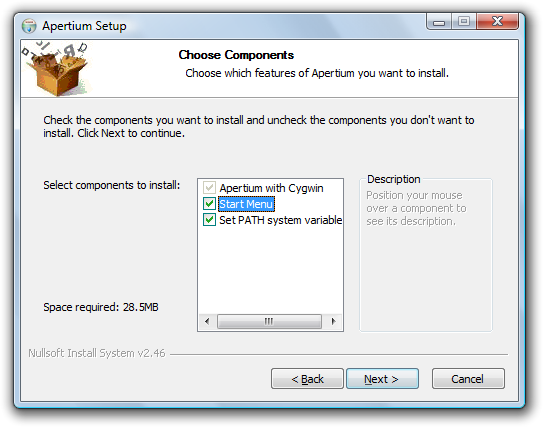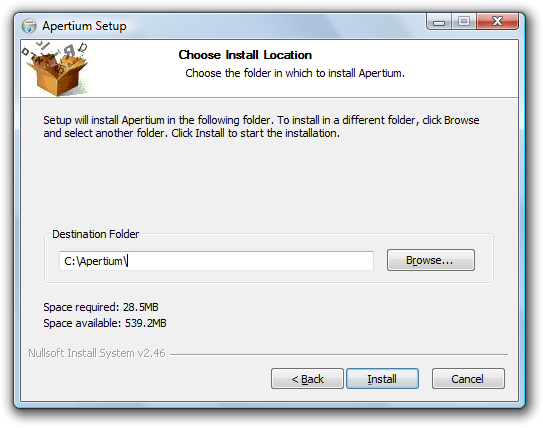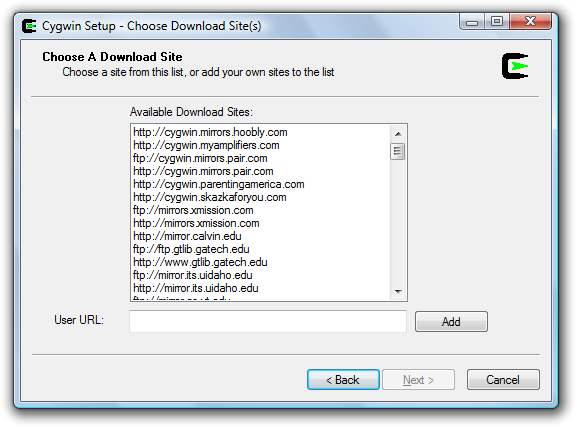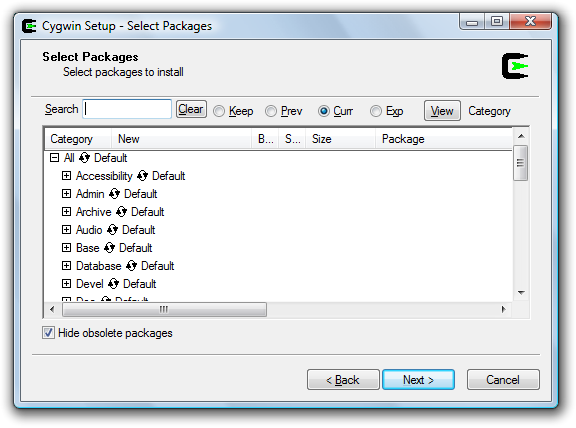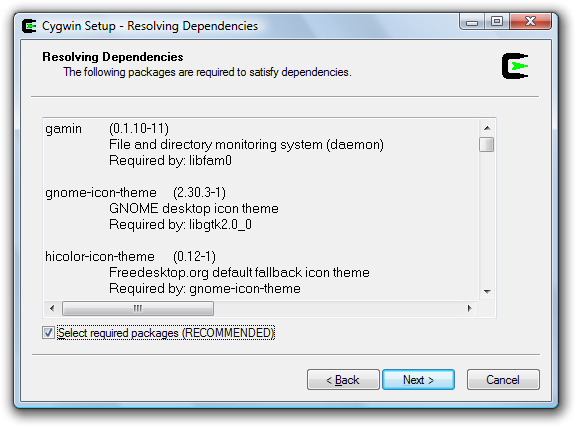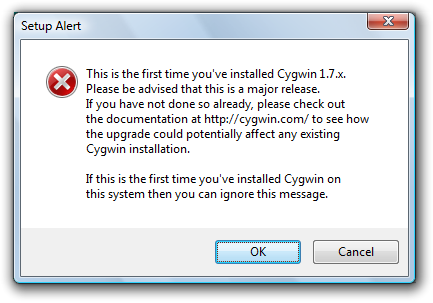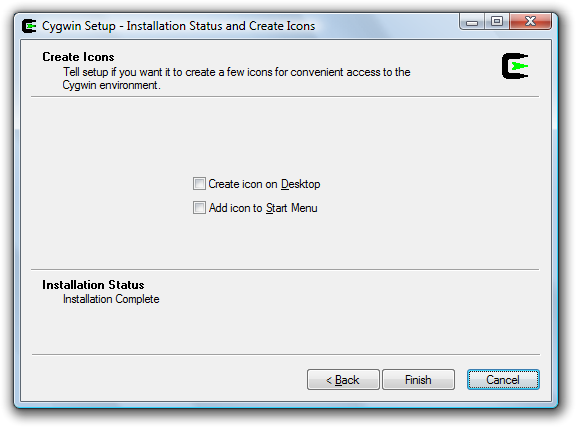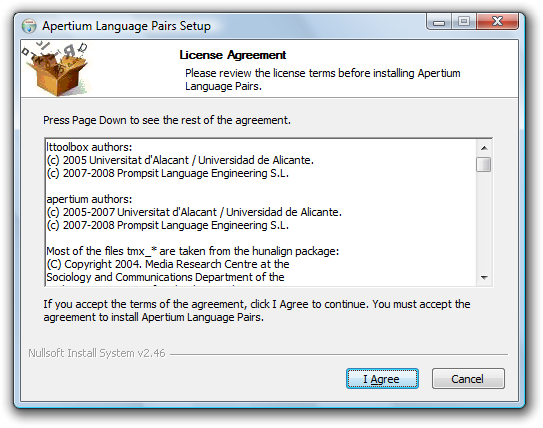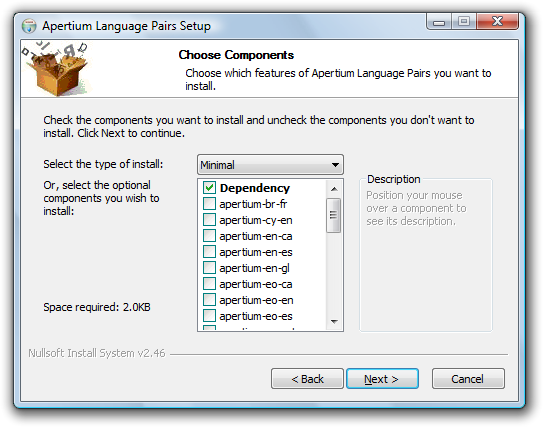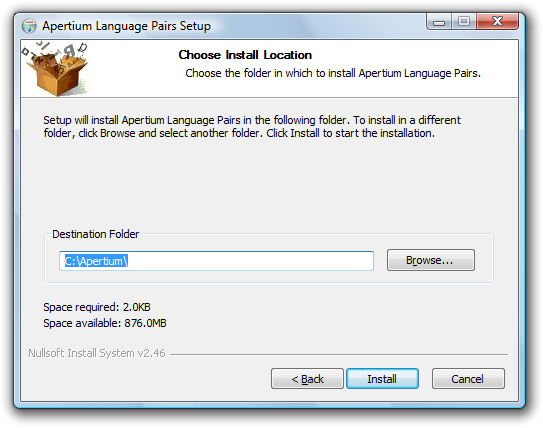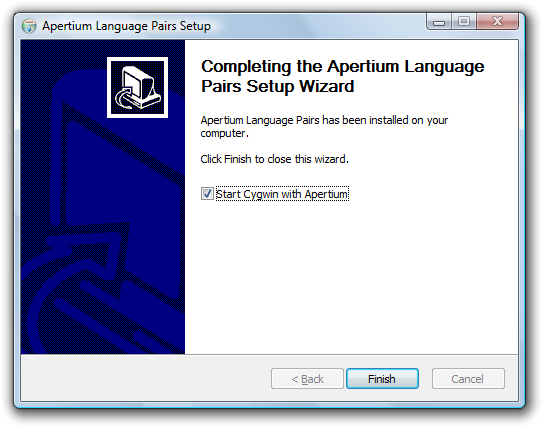User:Violet
Contents
Apertium Installation[edit]
1. Download the installer from Sourceforge. Run the executable file and read the license argreement of the Apertium installer (most parts are GNU/GPL). Click "I Agree" to continue.
2. Select the components you want to install. For unexperienced users, all of them are recommended. Click "Next" to go to next page.
3. Choose the desired installation location. A location without special characters (eg. a space or non-English characters) is recommended.
4. Cygwin installer will appear. Choose the nearest mirror and continue.
5. You will be asked to select Cygwin packages. It is okay to leave them all unmarked. Click "Next" to continue.
6. The installer may list packages which are required to install to resolve dependency problems. Click "Next" to continue.
7. An alert box may appear if this is the first time Apertium is being installed. Click "OK."
8. Cygwin setup will give you the option to create desktop icon and a shortcut in the Start Menu. The installer will create a Start Menu shortcut for Aperitum so there is no need to select them.
9. The Apertium setup will be completed and you may click "Finish" to close the process.
A Quick Test that it Works[edit]
You should now have the core/engine of Apertium installed (but no language pairs yet).
Upon installation, start Cygwin with Apertium. If you did not click the checkbox to run Cygwin after clicking "Finish," you may find the "Cygwin Bash Shell" in the Apertium folder in your Program Files in the start menu. The black "Cygwin" terminal window should be visible. If you try typing "apertium" and enter, you should see
USAGE: apertium [-d datadir] [-f format] [-u] <direction> [in [out]]
and some more text. If you get a "command not found" error, you must set your path to find the folder where your apertium command is. Type in:
export PATH=/home/apertium-install/apertium/apertium
and then you may type "apertium" to see the Usage instructions as seen above.
Apertium Language Pairs Installation[edit]
1. Download the language pair installer from Sourceforge. Run and read the license agreement of the installer. Click "I Agree" to continue.
2. Select 'Minimal' as the type to install and then select the language pairs you would like. The Main Apertium Wiki Page shows the possible language pairs. Click "Next" to continue. Full installation (selection every language pair) takes a few hours to install and is not recommended for normal users.
3. Select the location you would like the language pair installed and click "Next". The location must be the same as where Apertium was installed.
4. Allow the Cygwin Setup to install the language pair and click "Finish" to finish the installation process.
Quick Test that it Works[edit]
After the installation, the black "Cygwin" terminal window should be visible. You can also find a link to this in your Program Files from the Start menu under "Apertium".
If you type in "apertium -l" (without the quotes) and press enter, you should see a list of the codes of the installed language pairs. If this lists es-ca, you can try typing "echo hola mundo | apertium es-ca" (without the quotes). you should see "hola món"; similarly for other language pairs.
Translating a File[edit]
Example: translating an HTML file from Asturian to Spanish:
apertium -f html ast-es $(cygpath c:\\mystuff\\asturian_input.html) $(cygpath c:\\mystuff\\spanish_output.html)
(The cygpath stuff is unfortunately needed to get to a Windows file path from Cygwin. A Windows Power User could probably write a script to make this a right-click menu option.)
Please note that backslash needs to be escaped, by typing it twice!
Note : It is also possible to use UNIX syntax for paths replacing every \ of Windows path by a / . I don't know if it resolves the problem of cygpath. Bech 09:02, 11 September 2011 (UTC)
Further Development on a Language Pair[edit]
The installer puts the language data inside the Cygwin directory /home/apertium-install/languages, which is really located within the Windows directory C:\Apertium\home\apertium-install\languages. In there you'll find directories for all the installed language pairs, and can change language data and recompile etc. as described in Apertium New Language Pair HOWTO
